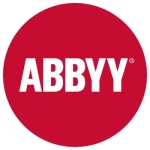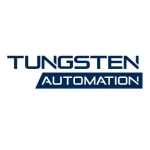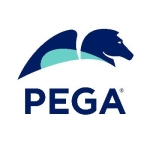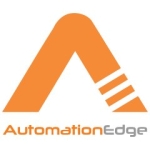What is our primary use case?
Across different business areas, the use cases differ. The back-office, for example, are more along the lines of reconciliation of data, the back-end operations. We have use cases in our dispatching department as well, where use cases can be like data is gathered for traders to make intelligent decisions, or nominations power plants to the website.
Some use cases in our procurement area and our financial services.
Our goal is to free our employees to do more value-added tasks, while the robots do the manual activities. That way, employees can move on to more sophisticated tasks. The robot does its work but the employees are still in control. For example, the dispatcher is still on the desk and looking at what a robot has nominated, for example.
We have use cases where RPA is integrating it with machine learning, with chat bots. . Our idea was to start with the basic robot and then make them more sophisticated by adding natural-language processing or machine learning. We have a couple of use cases there, as well. But the repetitive-task use cases are more common.
Our application server and our database are on Azure cloud. But you have to use a virtual machine to access it and that virtual desktop environment was on-prem. Currently, a project is going on to move them to virtual machines as well. So the Blue Prism hosting is currently on our private cloud, Azure, and the virtual machines are on-prem and will be moved to Azure in two months.
How has it helped my organization?
There are multiple advantages.
Time saving is definitely one of them. We do not build robots if they are not going to be effective; Process Improvement is key. You don't want to automate a non effective process.
it can be quality, it can be 24/7 operations, it can be compliance.
For example, in terms of time, a back-office operations guy would spend, let's say, a number of hours doing reconciliation activities from one system to another, which is something that can be done by a robot quite quickly.
When you look at the front-office, for example, the advantages are more quality-based — less human error. Our dispatching desk , a human error in entering values/nomination can cause imbalance/penalty costs. So five minutes of dispatcher time is different than five minutes in back-office operations. That's why we never say it's only time-savings. The benefit could be avoiding the cost of error. And the opportunity, to do more value adding tasks in the time saved.
As for 24/7 operations, for example a billing robot which can generate the bills before employees are in office. Then there are some compliance or audit-related situations, where you need to prove auditability of some of the processes. It used to be a human saying, "Yes, I have done the check," but now, if you have a robot checking it, you have everything in the system so an auditor can look into it. I would not say time is the main motivation; the motivations are multiple.
Another advantage, is future of work and modernising the workplace.
And then some are really not technology-related, is that business and IT are coming closer together. Business understands IT and IT understands the business. We have a federated COE. I am the head of the COE and it is more like a matrix organization where people from different organizations report to me functionally, and I just run an end-to-end customer journey. The way we implement has also changed. It's not that you build a robot and it's with IT, and IT maintains it. No. The business is still accountable for the result of the robot. these are not quantifiable advantages but you see them at the organizational level.
What is most valuable?
The ease of use is quite good. We have some internal developers so some of our training is more an introduction to robotics. The second module of training is more delivery-related, using the robotic operating model. The last one is Blue Prism-related training and that phase is already available via the Blue Prism portal. We have access to the portal with Blueprism. if somebody is interested in developing, they can learn that via the portal. I make the environment available to them. But the ease of use is really good because a lot of business people, who have some idea about logic and who can think in logic, can configure things, because there is no coding.
The other features are quite comparable to what is in the market right now. There's nothing special about them. But ease of use is important because the business can also handle it.
What needs improvement?
There are some weaknesses of the tool as well. For example, Blue Prism has been a little bit slow when it comes to the commitments on their roadmap. They had some delays last year, so I hope they make it up this year. They promise, but they are not meeting everything they promise in their roadmap. For example, they were launching a Decipher tool. It was delayed by more than a year. It has still not launched.
Also, the Control Room for the robots is not very sophisticated. That can be improved.
We are now going to some attended bots, as well. How do you make attended robots work? It is something that is counterintuitive. On the one hand, I'm saying I need an enterprise tool, and on the other hand, I want attended bots because some cases deserve it. While I need an enterprise tool, I now have some use cases where I want to have an attended bot as well and the tool is not very sophisticated on that end right now.
Buyer's Guide
Blue Prism
April 2025
Learn what your peers think about Blue Prism. Get advice and tips from experienced pros sharing their opinions. Updated: April 2025.
849,190 professionals have used our research since 2012.
For how long have I used the solution?
I have been using Blue Prism for a little more than three years.
What do I think about the stability of the solution?
It's stable. We haven't faced any problems with it.
What do I think about the scalability of the solution?
We haven't faced any issues. We are in the scaling phase and we are scaling well. We don't have a problem there. It's scalable.
We have > 60 robots that are live and the demand is high. There are multiple business areas that are live, and there are many more in the pipeline.
How are customer service and support?
Blue Prism's technical support is really good. If you raise a ticket you get an answer within 24 hours, and we have not paid anything extra for support. The maximum I have had to wait was two days. Getting an answer in one or two days is really good. And we generally get an answer from the product team, which is very good. And if they can't solve it via the support ticket in writing, they call you and discuss it.
You also have account partners so if something needs to be addressed quickly, you can make a call. Blue Prism has also visited us two or three times and that is really good. We have a good relationship.
Which solution did I use previously and why did I switch?
We did not have a previous solution.
One of the major features, and it's why we selected Blue Prism, is that it's an enterprise-level automation. We wanted something that would be enterprise software, so we could monitor it centrally and maintain it centrally, while giving people the freedom to work independently as well. We didn't want a situation where I build a robot and now I'm looking at it on my screen. The idea was to free up peoples' time so that they could do something value-add while the robot is running on its own machine. This enterprise-level type of software was the need and Blue Prism fulfills that.
How was the initial setup?
I have been involved right from the beginning and the initial setup was okay. It was not something that IT could not handle. We didn't run into a lot of trouble.
Setting up our infrastructure was not a problem from the Blue Prism side, but it was more with our infrastructure. Our company is a little bit complex. But it did not take more than four to six weeks for the infrastructure setup, and that was three-and-a-half years ago, so it might be even faster now.
For maintenance of the solution I have an application manager. I have somebody who does service-enabling so that the robots can move to production. For delivery, I have a project manager, and there are BAs and developers and, for each business area, I have an implementation lead and, of course, a process expert/owner. In my COE I also have these roles and I also have a deployment lead who takes care of the policies and the procedures around the robotics for the entire organization. I also have a solution architect and another role called dependency manager, because there are a lot of different engines we have to manage since we're working with a lot of applications.
What about the implementation team?
We used a consultant in the beginning and we also now use an integrator.
What was our ROI?
The use cases I outlined are the areas where we are seeing ROI: Quality, compliance, error-avoidance, opportunity cost, and time-saving.
What's my experience with pricing, setup cost, and licensing?
The pricing is scalable for a enterprise-level solution. It's quite scalable and it's quite comparable with the market. If you really scale well over the number of licenses you have, you can achieve economies of scale and it comes out to be very cheap.
There are no costs in addition to the standard licensing fees. There is an option to increase your support levels by paying another 10 percent or 20 percent on your licenses, depending on how much support you want. We are still happy with the support.
Which other solutions did I evaluate?
There were three leaders at the time we did our evaluation three years ago and were quite equal in terms of their functionalities. One of the factors that led us to choose Blue Prism was the enterprise-level functionality.
What other advice do I have?
My advice is "go for it." It's good. We are satisfied that we have achieved with the tool, and we are continuing with it.
Having said that, I would advise that you are free to explore the market and do a study, but in the end all the tools are very similar. It's more about how you will handle it in your organization. That is what is more important. There is not just the tooling around it. There is also the people management aspect, and process management. So there's a lot that goes along with it; more than just the tool. One of the things that I like about Blue Prism is that their operating model is quite good.
The biggest lesson I've learned is not about Blue Prism, it's about RPA as a whole. As I said, it's not just the tool or the technology, it's about how you bring in change management in the company. How do you take people along with you? How do you explain the journey? How do you set up the operating model? Because for scaling, your operating model is really important. You can't just put two robots in place and then think that you will scale because there are a lot of considerations around it. How will your organization adapt to it? For example, when a human joins your company he or she needs an ID. What about robots? Do they need an ID? How do those processes fit in when they operate? How will they communicate with humans? There's a lot of change management around it for the whole organization.
It's a digital transformation, or you could just call it a transformation. You need to think about a lot of moving parts around it. The tool and the technology are quite easy actually, because all the companies are quite experienced in it. But change management and the transformation part are quite difficult.
Another thing to think about is how do you choose the right processes to automate? You could think about just automating randomly, or you could think about whether a process is even needed for the organization. Why is somebody doing it? Maybe that process is not even needed; it's obsolete. You might get rid of some processes. We did that as well, and sometimes RPA is not the right solution. So think about automation as a whole. These are some of the things that I was given advice on.
I'm not a technology specialist, I'm a process transformation expert. It's not about technology in the end, it's about what you have done as a transformation to the company. The ways of working have changed. The way you look at a process has changed. A back-office analyst is now building robots himself, for himself. The way he's looking at the process has totally changed.
We do a lot of RPA training as well. We have a in-house-built curriculum where we have multiple training modules. When people do the training, they change the way they look at processes. They are already thinking about robots or digitalization. You can call it the future of work. When you began this journey, you never thought you would have these kinds of advantages. But now you have them.
I would have given Blue Prism a nine out of 10 if they had delivered on their roadmap, especially Decipher.
Disclosure: PeerSpot contacted the reviewer to collect the review and to validate authenticity. The reviewer was referred by the vendor, but the review is not subject to editing or approval by the vendor.



















